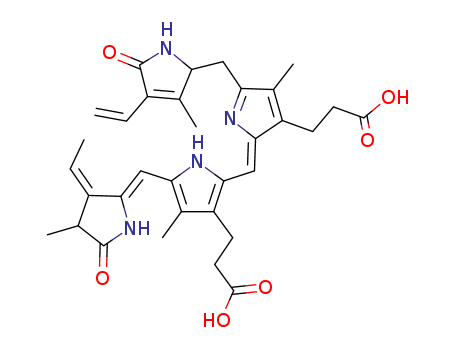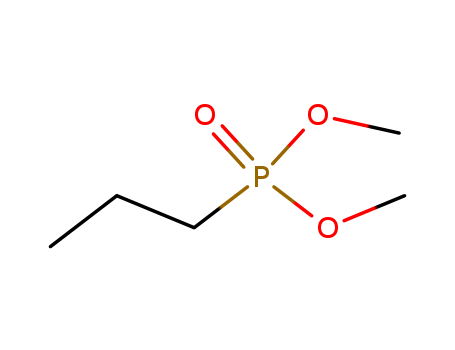- Product Details
Keywords
- Sodium amide
- 7782-92-5
- H2NNa
Quick Details
- ProName: H2NNa Sodium amide 7782-92-5
- CasNo: 7782-92-5
- Molecular Formula: H2NNa
- Appearance: Powder
- Application: 7782-92-5 ...
- DeliveryTime: by air
- PackAge: Aluminium Foil Bag and Paper Drum
- Port: Any port of China
- ProductionCapacity: 100 Metric Ton/Day
- Purity: 99.5%
- Storage: 1MT
- Transportation: By Sea/Air/DHL
- LimitNum: 1 Metric Ton
- Grade: Industrial Grade,Food Grade,Pharma Gra...
Superiority
Our company was built in 2009 with an ISO certificate.In the past 5 years, we have grown up as a famous fine chemicals supplier in China and we had established stable business relationships with Samsung,LG,Merck,Thermo Fisher Scientific and so on.Our main business covers the fields below:
1.Noble Metal Catalysts (Pt.Pd...)
2.Organic Phosphine Ligands (Tert-butyl-phosphine.Cyclohexyl-phosphine...)
3.OLED intermediates (Fluorene,Carbazole,Boric acid...)
4.Customs Synthesis
Our advantage:
1. Higest quality and good package
2.Fast delivery
3.Better payment term
4.Fast response to customer within 6 hours
5.Good business credit in Europe ,US ,Japan ,Korea
Anyway ,if you need any chemicals from China ,Henan Tianfu can help you
Details
| Sodium amide Basic information |
| Product Name: | Sodium amide |
| Synonyms: | sodiumamide(na(nh2));SODAMIDE;SODIUM AMIDE;sodium amide,sodamide;SODIUM AMIDE TECH. 90+%;SODIUM AMIDE, HYDROGEN STORAGE GRADE;SODIUM AMIDE, CRYSTALLINE;SODIUM AMIDE, 50 WT. % SUSPENSION IN XYL ENES |
| CAS: | 7782-92-5 |
| MF: | H2NNa |
| MW: | 39.01 |
| EINECS: | 231-971-0 |
| Product Categories: | API intermediates;Chemical Synthesis;Inorganic Bases;AmidesChemical Synthesis;Alternative Energy;Materials for Hydrogen Storage;Organic Bases;Synthetic Reagents;Inorganic BasesEssential Chemicals;Routine Reagents;Technical Grade;Alternative Energy;Amides;Chemical Synthesis;Essential Chemicals;Inorganic Bases;Inorganic Salts;Materials for Hydrogen Storage;Materials Science;Research Essentials;Solutions and Reagents;Synthetic Reagents;Technical Grade;Pharmaceutical raw material |
| Mol File: | 7782-92-5.mol |
|
|
|
| Sodium amide Chemical Properties |
| Melting point | 210 °C(lit.) |
| Boiling point | 400 °C(lit.) |
| density | 1.39 g/cm3 (25℃) |
| Fp | 85 °F |
| storage temp. | Flammables + water-Freezer (-20°C)e area |
| form | crystalline |
| Water Solubility | REACTS VERY VIOLENTLY, EVEN EXPLOSIVELY |
| Sensitive | Air & Moisture Sensitive |
| Merck | 14,8576 |
| Stability: | Stability Flammable. Reacts violently with water producing very toxic fumes. In case of fire do not use water, but instead smother with soda ash. May form explosive peroxides if heated, or if stored for extended periods in contact with air or oxygen. Incompatible with water and aqueous solutions, carbon dioxide, halogenated hydrocarbo |
| CAS DataBase Reference | 7782-92-5(CAS DataBase Reference) |
| EPA Substance Registry System | Sodium amide (Na(NH2))(7782-92-5) |
| Safety Information |
| Hazard Codes | F,C,Xi,N |
| Risk Statements | 14/15-19-34-20/21-10-67-65-63-48/20-11-36/37-15/29-14-50-29 |
| Safety Statements | 26-43-45-62-7/8-43D-36/37/39-27-16-61 |
| RIDADR | UN 3129 4.3/PG 2 |
| WGK Germany | 2 |
| F | 3-10-23 |
| TSCA | Yes |
| HazardClass | 4.3 |
| PackingGroup | II |
| Hazardous Substances Data | 7782-92-5(Hazardous Substances Data) |
| MSDS Information |
| Provider | Language |
|---|---|
| SigmaAldrich | English |
| ACROS | English |
| ALFA | English |
| Sodium amide Usage And Synthesis |
| Chemical properties and main uses |
Sodium amide is white or olive green crystalline powder, it has ammonia odor, chemical formula is NaNH2, the molecular weight is 39.01, melting point is 210℃, boiling point is 400℃. When heated to 500~600℃, it can decompose into sodium, nitrogen, and hydrogen. It can react violently with water, and generates sodium hydroxide, and releases ammonia. It is slightly soluble in liquid ammonia, it reacts slowly with alcohol. It quickly absorbs carbon dioxide and water in the air, it should be sealed. Magnesium, zinc, molybdenum, tungsten and quartz, glass, silicate and other liquid substances are soluble in liquid state sodium amide.-1 Monovalent radicals-amino NH-2 ionic compounds is formed by sodium ions and ammonia molecules which gets rid of hydrogen atom. Sodium amide is flammable, explosive, corrosive and deliquescence. Since the amino group has lone pair of electrons, it is easy to combine protons, so intense hydrolysis happen when meets water, the solution is alkaline: NaNH2 + H2O = NaOH + NH3. It is dissolved in hot ethanol and liquid ammonia. Dust is toxic. It has severe irritation for skin, eyes and respiratory system. After touch the skin, it can cause corrosive burns. It can be used in organic synthesis aminating agent; condensation accelerator; dehydrating agent, dehalogenating agent; polymerization initiator and manufacturing hydrazine, sodium cyanide, azide, cyanide, hydrazine, indigo raw materials. Sodium amide is readily oxidized in air to form a layer of yellow variety of oxidation products on the surface. The partial oxidation product is explosive, explosion can happen with heat or friction. When the sodium amide is heated to 300~330℃ in vacuo, it can decompose into nitrogen, sodium, hydrogen and ammonia. It should be filled with inert atmosphere in the bottle sealed and stored to avoid contacting with air, water or fire to avoid explosion and fire. When sodium amide reacts with carbon monoxide, sodium cyanide can generate, this reaction can be used for synthesis of sodium cyanide. Sodium amide is generally used for organic synthesis condensation promoting agent, dehydrating agent, alkylating agent. With the reaction of molten sodium with gaseous ammonia at 300~400 ℃, sodium amide can be obtained industrially, sodium amide is obtained by the reaction of sodium and ammonia in the presence of catalyst at room temperature in laboratory. |
| Toxicity |
Dust is toxic, it can cause corrosive burns, it can severely irritate the eye, skin and respiratory system. People should wear gas masks and gloves when disposes of escaping material, it should be mixed with dry sand and sent to open area, after reacting with plenty of water, it can be sent to the wastewater system. Pollution ground should also be rinsed with water; when contacts with skin, eye irritation, people should immediately wash with water; when strays into the mouth, people should immediately gargle, drink water and vinegar or 1% acetic acid, and then be sent to hospital for treatment. |
| Uses |
1. It can be used as the condensation accelerator in organic chemical reactions. It is raw material in synthesis of vitamin A. It can be also used as dehydrating agent, dehalogenating agent, alkylating agent, ammoniated agent. In liquid ammonia, the dissociation of NHf in liquid ammonia can be used as initiator of anionic polymerization producting polyvinyl chloride ion. It is also used in the manufacture azides, cyanide, hydrazine, and indigo. 2. It can be used as condensation-accelerating agent in organic synthesis, dehydration and the like. The above information is edited by the chemicalbook of Wang Xiaodong. |
| Production method |
High-temperature method: sodium metal is melt at 97~100℃, then slowly passes through dehydration liquid ammonia, when be heated to 350 ~360℃, sodium amide and hydrogen can generate, the reaction is cooled, cemented sheet, and then pulverized to obtain sodium amino finished. 2Na + 2NH3 → 2NaNH2 + H2 ↑ |
| Category | When meets water, it is combustible goods. |
| Explosive hazardous characteristics | It can intensely react with water to produce combustible gas, maybe it could explode. |
| Flammability hazard characteristics | It can decompose into products of toxic nitrogen oxides; flammable and explosive hydrogen gas and caustic sodium hydroxide when meets water. |
| Storage characteristics | Treasury ventilation low-temperature drying; it should be stored separately with acid, alkali ; it should be moistureproof. |
| Extinguishing agent | Dry sand, carbon dioxide. |
| Chemical Properties | grey powder |
| Uses | Reagent for: Synthesis of allylic amines and amides1 Synthesis of antibacterials2 Aggregative activation and heterocyclic chemistry3 Phenylation with diphenyliodonium chloride4 |
| Uses | Dehydrating agent. In the production of indigo and hydrazine. Intermediate in the preparation of sodium cyanide. In ammonolysis reactions, in Claisen condensations, alkylation of nitriles and ketones, synthesis of ethynyl Compounds, acetylenic carbinols. Fused NaNH2 dissolves metallic Mg, Zn, Mo, W, quartz, glass, silicates and other substances. |
| General Description | Odorless colorless solid. Denser than water. |
| Air & Water Reactions | Highly flammable. Reacts violently with water and bursts into flame. |
| Reactivity Profile | Sodium amide is a powerful reducing agent. Reacts violently with oxidizing agents. Reacts violently with steam and water to form caustic NaOH and NH3 vapors [Bergstrom et al., Chem. Reviews, 12:6 1932]. May form explosive compounds in the presence of water and carbon dioxide [Handling Chemicals Safely 1980 p 826]. Liable to deflagration upon heating and friction. Forms an explosive peroxide on storage. When Sodium amide and chromic anhydride are mixed together a vigorous reaction results; the same occurs with other oxidizing agents including dinitrogen tetraoxide, potassium chlorate, sodium nitrite. [Mellor 11:234 1946-47]. Reaction with 1,1-diethoxy-2- chloroethane produces sodium ethoxyacetylide, which is extremely pyrophoric [Rutledge 1968 p. 35]. Reactions with halogenated hydrocarbons may be violently explosive. Sodium amide forms toxic and flammable H2S gas with CS2. (714). |
| Health Hazard | Ammonia gas formed by reaction of solid with moisture irritates eyes and skin. Solid causes caustic burns of eyes and skin. Ingestion burns mouth and stomach in same way as caustic soda and may cause perforation of tissue. |
| Fire Hazard | Special Hazards of Combustion Products: Toxic and irritating ammonia gas may be formed. |
| Sodium amide Preparation Products And Raw materials |





 Assessedsupplier
Assessedsupplier










